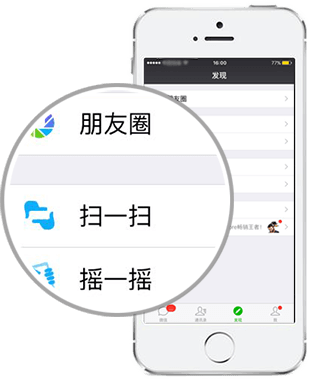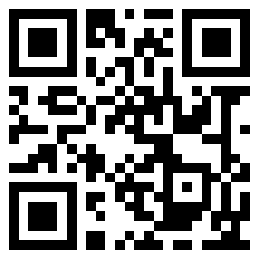Part 2
READING PASSAGE 2
You should spend about 20 minutes on Questions 14-26, which are based on Reading Passage 1 below.
THE ROSETTA STONE
A. The Rosetta Stone is one of the most famous artefacts housed in the British Museum. But what exactly is it, and why is it significant? The Stone is a fragment of a much larger stele and contains an inscription in three distinct scripts. This discovery played a crucial role in enabling scholars to decipher Egyptian hieroglyphs, a writing system composed of pictorial symbols. Before its discovery, hieroglyphs had remained an enigma for centuries, with their meanings lost to time. Today, the Stone continues to be a symbol of linguistic breakthroughs and cultural heritage.
B. Carved in 196 BC and discovered in 1799, the Rosetta Stone is believed to have originally been displayed in a temple. During later periods, possibly in the early Christian or medieval era, it was relocated and ultimately repurposed as building material in the construction of Fort Julien near the town of Rashid (Rosetta) in the Nile Delta. At the time of its discovery, ancient Egyptian hieroglyphs were unreadable. The inscription on the Stone is an official decree issued on behalf of King Ptolemy V (r. 204–181 BC). This decree was not unique to the Rosetta Stone—it was duplicated on multiple large stone slabs, known as stelae, which were distributed across Egyptian temples. The Rosetta Stone itself is merely one of these copies, but its value lies in the fact that the text appears in three scripts: hieroglyphs, which were used for religious or formal inscriptions; Demotic, the everyday script of native Egyptians; and Greek, the administrative language of the ruling class, who were Greco-Macedonian descendants of Alexander the Great’s conquest.
C. The Rosetta Stone was discovered in a fragmented state, with only a portion of the original text surviving. It contains 14 lines of hieroglyphic script, 32 lines in Demotic, and 53 lines in Ancient Greek. But what does the inscription actually convey? The text, authored by a group of Egyptian priests, praises Ptolemy V and documents the benefits he granted to both the religious order and the wider population. The decree was inscribed in three scripts to ensure accessibility for various audiences—priests, officials, and rulers. Since Egypt at the time was governed by Greek kings following Alexander the Great’s conquest in 332 BC, Greek was the language of administration. The discovery of the Rosetta Stone was groundbreaking because scholars could still read Ancient Greek, allowing them to use it as a reference point to eventually decipher Egyptian hieroglyphs.
D. When the Stone was unearthed, its colour appeared unusual, likely due to prolonged burial in soil. After cleaning, it was identified as a dark grey-pinkish granodiorite, a rock similar to granite, featuring a characteristic pink streak. The polished surface reveals a mottled blend of pink and grey hues. Measuring 112.3 cm in height at its tallest point, 75.7 cm in width, and 28.4 cm in thickness, the Stone weighs approximately 760 kilograms. It has an irregular shape due to breakage, with the top section missing and a small fragment absent from the lower right corner. Originally, it would have been a rectangular stele, designed to stand upright. The missing portions of the text have led scholars to compare the Rosetta Stone with similar decrees to reconstruct its full content.
E. The Rosetta Stone was unearthed during Napoleon’s military expedition in Egypt. As leader of the French forces, Napoleon was deeply intrigued by Egypt’s ancient civilization and assembled a team of 167 scientists, engineers, and scholars to accompany him. During this campaign, French soldiers stumbled upon numerous artefacts, including the Rosetta Stone. In 1799, while rebuilding a fort at Rashid (Rosetta), they discovered the Stone embedded within a wall. Pierre-François Bouchard (1771–1822), the officer overseeing the work, recognised its potential significance and reported the find to the Institut d’Égypte, a scholarly body established by Napoleon. Following Britain’s victory over France in Egypt, the Rosetta Stone was acquired by the British under the terms of the Treaty of Alexandria. The Stone was transported to England, along with other significant artefacts, arriving in Portsmouth in February 1802. By July of that year, it had been formally presented to the British Museum by King George III. The Rosetta Stone, alongside other sculptures, was placed on public display and has remained a key exhibit since 1802, with only one temporary relocation. During World War I, fearing damage from air raids, museum officials moved it underground for safekeeping. It was stored for two years in a station along the Postal Tube Railway, 15 meters beneath Holborn. Today, the Rosetta Stone continues to attract millions of visitors and remains one of the most visited artefacts in the museum’s collection.
Questions 14-17
Reading Passage 2 has five sections, A-E.
Which section contains the following information?
Write the correct letter, A-E, in boxes 14-17.
NB You may use any letter more than once.
14.ABCDE . a description of some of the Rosetta Stone’s physical features
15.ABCDE . an explanation of why the writing on the Rosetta Stone is significant
16.ABCDE . a description of what happened to the Rosetta Stone during the war
17.ABCDE . an account of the Rosetta Stone’s initial location
Questions 18-22
Do the following statements agree with the information given in Reading Passage 2?
In boxes 18-22 on your answer sheet, write
|
TRUE. |
if the statement agrees with the information |
|
|
FALSE. |
if the statement contradicts the information |
|
|
NOT GIVEN. |
If there is no information on this |
|
18.TRUEFALSENOT GIVEN . The Rosetta Stone was found by a French soldier during the Egyptian campaign.
19.TRUEFALSENOT GIVEN . The Rosetta Stone was originally used for a religious ceremony.
20.TRUEFALSENOT GIVEN . The decree on the Rosetta Stone was written by the Egyptian king himself.
21.TRUEFALSENOT GIVEN . The Rosetta Stone provided the key to understanding ancient Egyptian hieroglyphs.
22.TRUEFALSENOT GIVEN . The Rosetta Stone was originally larger than any other stela found in Egypt.
Questions 23-24
Choose TWO letters, A-E.
Write the correct letters in boxes 23 and 24 on your answer sheet.
Which TWO of the following points does the writer make about the Greek script on the Rosetta Stone?
A
- It was suitable for writing a decree.
B
- It was used by Egyptian priests.
C
- It was understood by the leaders of Egypt.
D
- It was easier to translate than the other scripts.
E
- It was the key to deciphering the other scripts.
Questions 25-26
Choose TWO letters, A-E.
Write the correct letters in boxes 25 and 26 on your answer sheet.
Which TWO of the following points does the writer make about the Rosetta Stone?
A
- It was found by someone who recognised it as significant.
B
- It was discovered in the same place as other important artefacts.
C
- It was sent to the British Museum as soon as it was found.
D
- It was taken to England by the French immediately after its discovery.
E
- It was transported to England with other valuable items.





